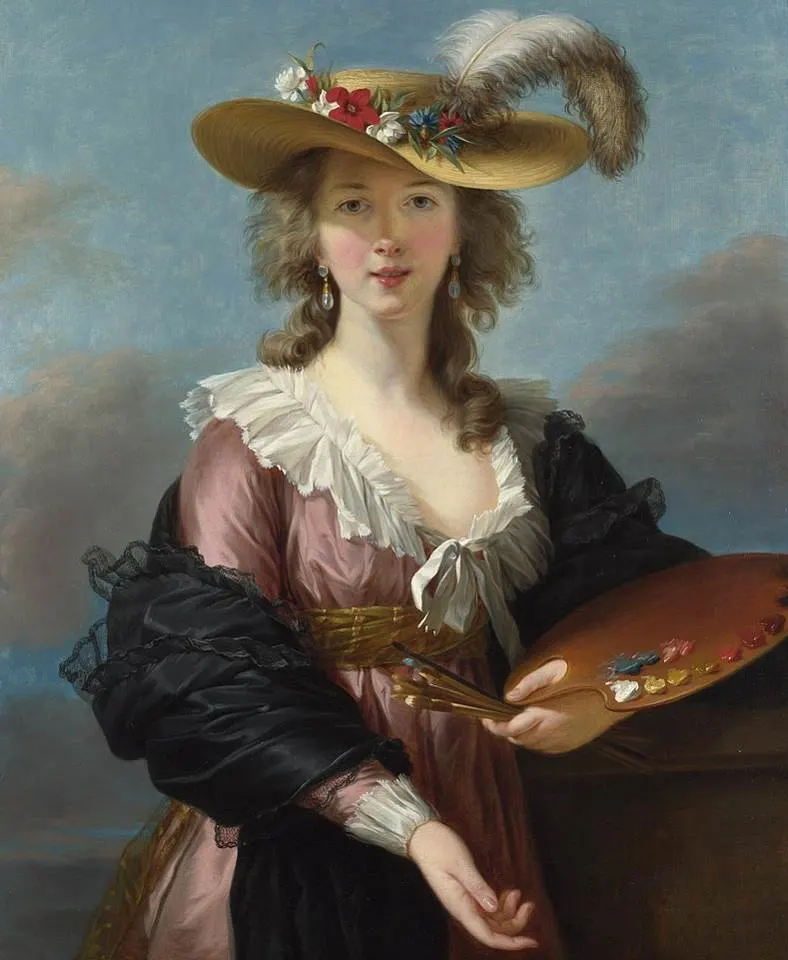When a young female French painter started to make a name for herself in the second half of the 18th century, she adopted the popular Rococo style.
Élisabeth Vigée Le Brun (1755-1842) lived through the transition between Rococo art and Neoclassical art and gradually transformed her style to suit the contemporary artistic preference.
She worked as a portrait painter for the French court during the final years of the Ancien Régime. When the French Revolution broke out, she feared for her life and fled to Italy in 1789.
She spent 12 years abroad, living and working in Italy, Austria, Russia, and Germany, before returning to France in January 1802.
Vigée Le Brun, also known as “Madame Le Brun,” was a prolific Rococo artist who produced 660 portraits and over 200 landscapes during her career.
In this article, we take a closer look at some of the most famous paintings by Élisabeth Vigée Le Brun so you can get a clear view of her remarkable talent.
1. Marie Antoinette with a Rose
- Date created: 1783
- Dimensions: 116.8 × 88.9 centimeters (46 × 35 inches)
- Location: Palace of Versailles, France
Marie Antoinette with a Rose is one of the more than 30 portraits of Marie Antoinette (1755-1793) that Élisabeth Vigée Le Brun produced. Although she painted nearly 3 dozen portraits of the French Queen, she was never her official painter. This means the two must have gotten along rather well.
This particular work was painted to replace an earlier version that was put on display at the Paris Salon in 1783. This painting, which depicted the French Queen in a casual outfit, caused a scandal at the Salon. This painting shows Marie Antoinette wearing an outfit suitable for a woman in her position that was made of French silk.
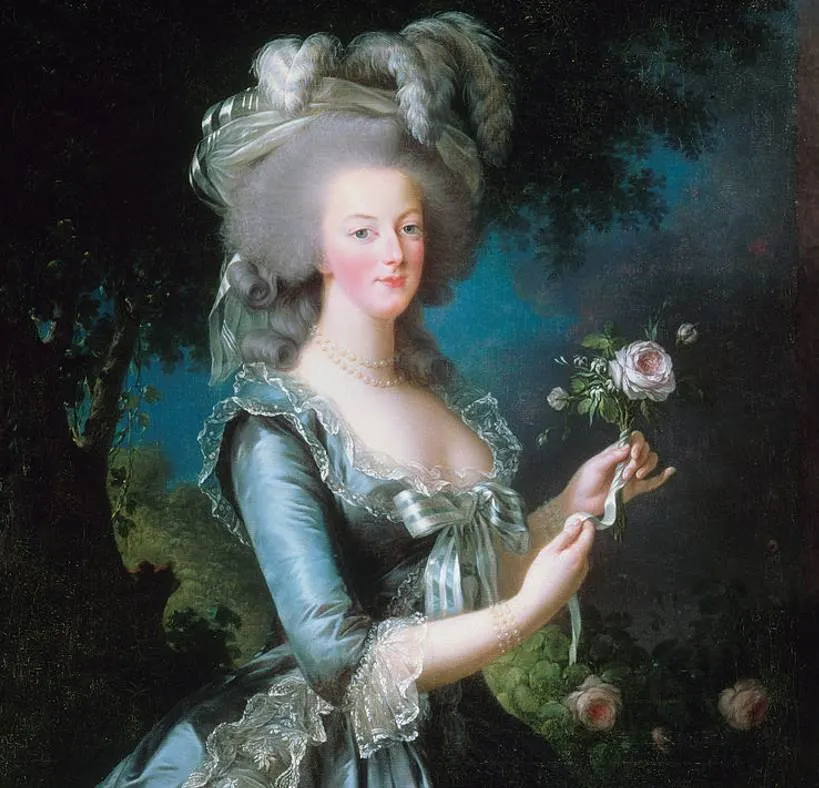
2. Self-Portrait with Her Daughter Julie
- Date created: 1789
- Dimensions: 130 x 94 centimeters (51.1 x 37 inches)
- Location: Louvre Museum, Paris, France
Although Julie appeared in multiple of her paintings, Élisabeth Vigée Le Brun only produced two paintings together with her daughter Julie Le Brun (1780-1819). It was produced shortly before the French Revolution broke out and the two fled the country to Italy.

The French artist was inspired by the Madonna paintings of the Renaissance in the way she depicted herself while she embraces her daughter. The painting was commissioned by Charles-Claude Flahaut de la Billarderie (1730-1809), the director of the Royal Buildings and an important figure in the world of art in the 18th century.
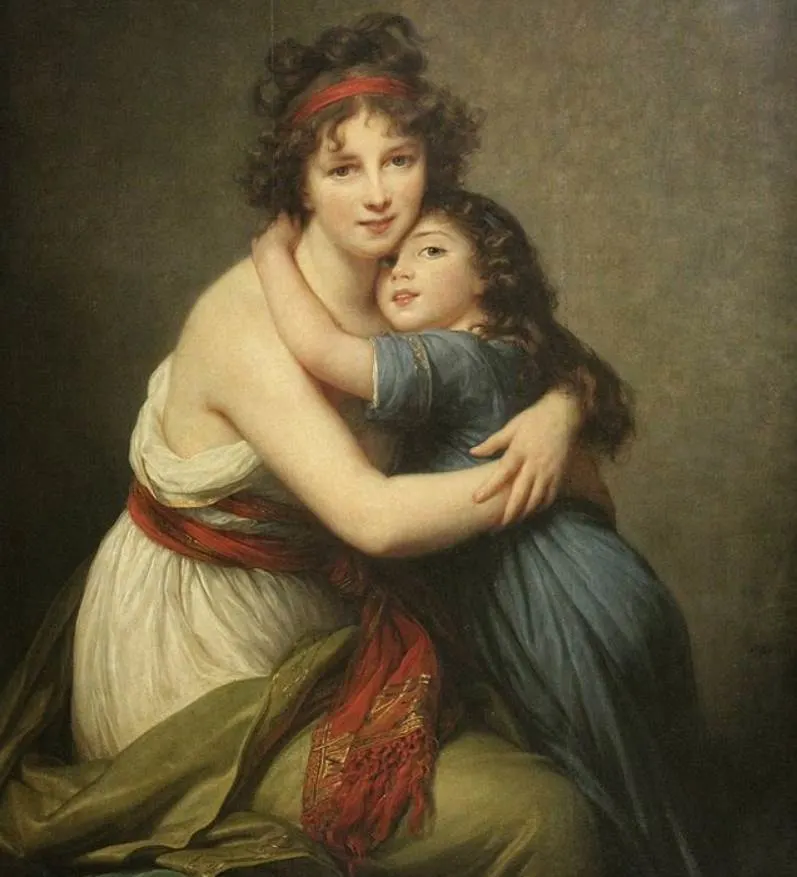
3. Marie Antoinette and Her Family
- Date created: 1787
- Dimensions: 275 × 216.5 centimeters (108 × 85.2 inches)
- Location: Palace of Versailles, France
The reputation of Marie Antoinette went from bad to worse during the 1780s as she accumulated scandals. Although several of these were unjustified, her image never recovered and she was partially blamed for many events that led up to the French Revolution.
To sway public opinion, she commissioned a painting from Vigée Le Brun together with her young children. Marie Antoinette and her Family is a painting that depicts the French Queen next to an empty cradle, a reference to the child she had recently lost.
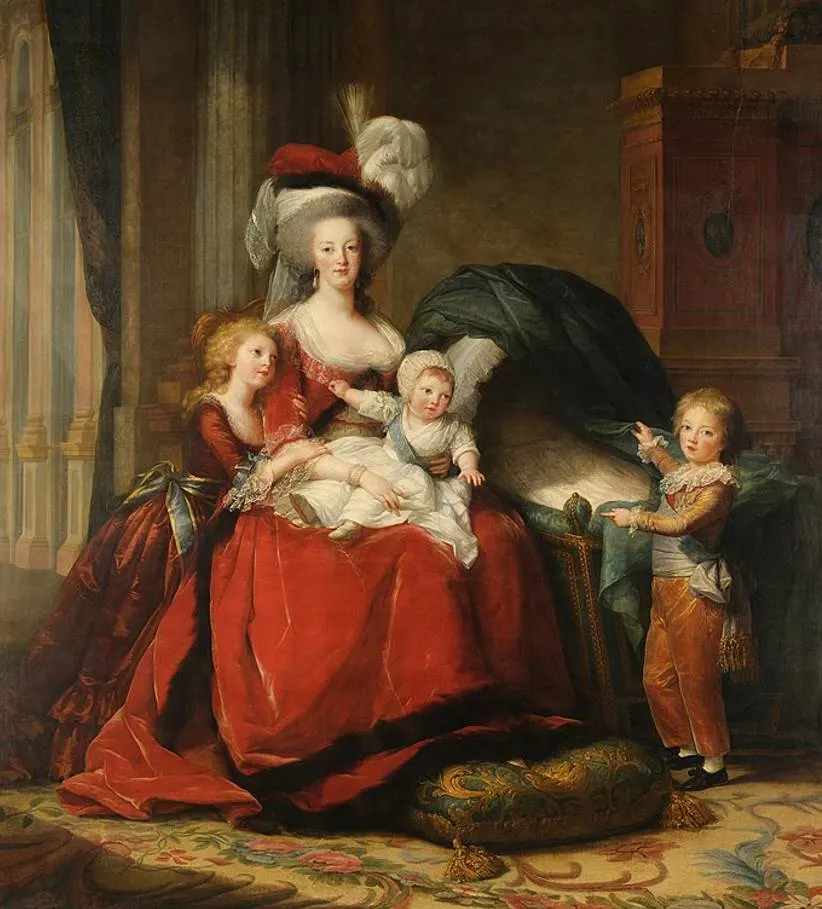
4. Peace Bringing Back Abundance
- Date created: 1780
- Dimensions: 102.5 x 132.5 centimeters (40.3 x 52.1 inches)
- Location: Louvre Museum, Paris, France
The year 1783 was an important one n the life of the young aspiring artist. She was in her late twenties and earned the patronage of Queen Marie Antoinette that year. At the time and was aiming to be accepted to the Académie royale de Peinture et de Sculpture.
This was the most prestigious art institution in France at the time which was established in 1648. She painted a work titled “Peace Bringing Back Abundance” as her reception piece. This is a perfect reflection of both the Rococo and Neoclassical styles that she incorporated into her works. It earned her membership in the institute, an honor only 15 women earned between 1648 and 1793.

5. Madame Grand
- Date created: 1783
- Dimensions: 92 x 72 centimeters (36.2 x 28.3 inches)
- Location: MET Museum, New York City, United States
Madame Grand is the title of a painting that depicts Catherine Noël Grand (1762-1834), the mistress of French diplomat Charles Maurice de Talleyrand-Périgord (1754-1838). He was an important French clergyman and politician who held many positions in subsequent French governments.
The couple eventually married in 1802 but this marriage ended in divorce in 1815. It was completed the year that she was accepted to the academy and she exhibited it at the Académie royale de Peinture et de Sculpture Salon in 1783.
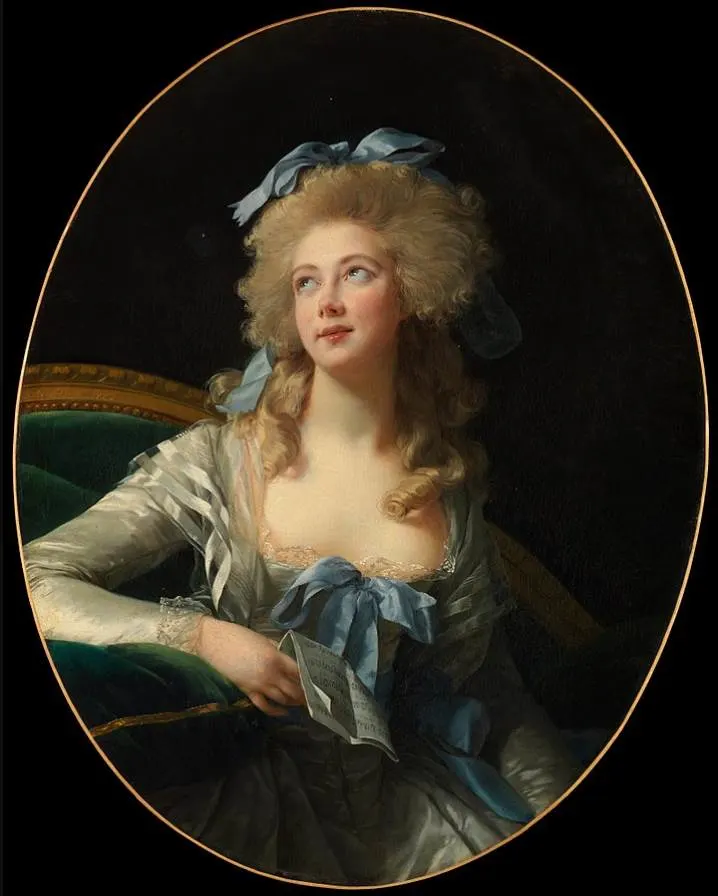
6. Julie Le Brun as Flora
- Date created: 1799
- Dimensions: 129.5 x 97.8 centimeters (50.9 x 38.5 inches)
- Location: Museum of Fine Arts, St. Petersburg (Florida), United States
Julie Le Brun as Flora is one of several paintings that depict her daughter, Julie Le Brun, here as the Roman goddess Flora. The girl was 19 years old at the time. She traveled extensively with her mother after she and her father Jean-Baptiste-Pierre Le Brun split up in 1789.
The relationship between mother and daughter wasn’t the best and it abruptly ended when Julie married a man named Gaëtan-Bernard Nigris. Her mother didn’t agree with the marriage and although Julie tried to make for herself as an artist as well, her career never took off. She died in 1819 at the age of 39, about 13 years before her mother passed away.
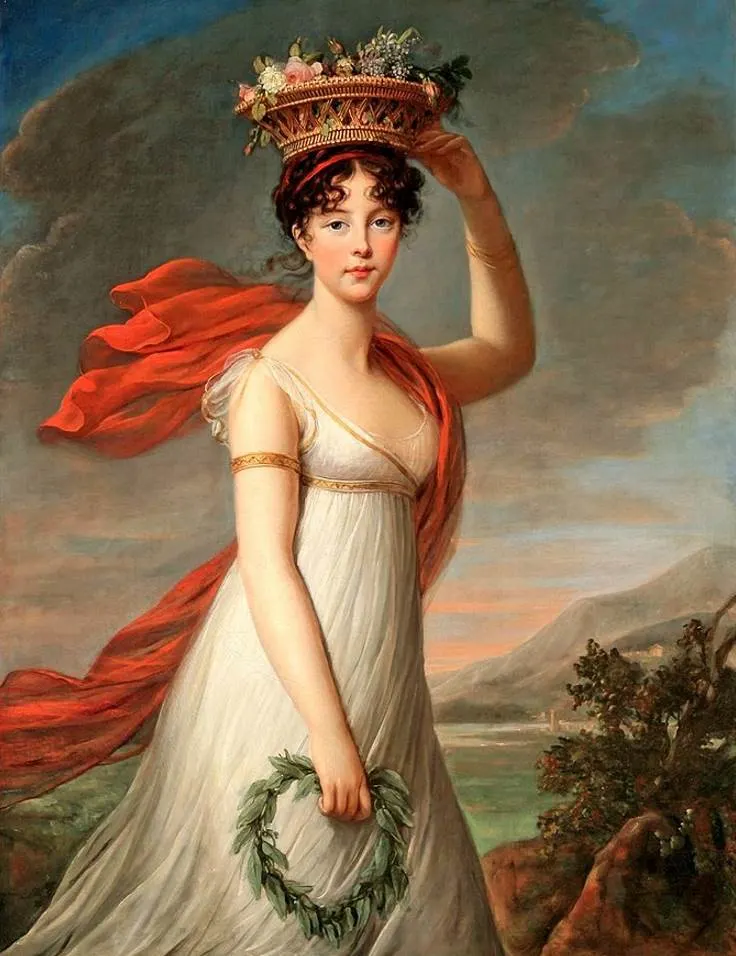
7. Portrait of Madame Perregaux
- Date created: 1789
- Dimensions: 100 x 79 centimeters (39.3 x 31.1 inches)
- Location: Wallace Collection, London, United Kingdom
Compared to her daughter Julie, Élisabeth Vigée Le Brun never had problems earning commissions during her long career. This painting depicts Adélaïde de Praël (1758-1794), the wife of Jean-François Perregaux. He was the banker of the artist and an important patron of the arts.
This painting emphasizes exactly why the artist was so popular with rich clientele because she managed to portray them as glamorous as possible. The painting was included in the Paris Salon of 1791, a time that Vigée Le Brun was already living abroad. The dress was referred to as a Spanish dress and might have been influenced by the paintings of Peter Paul Rubens well over a century earlier.
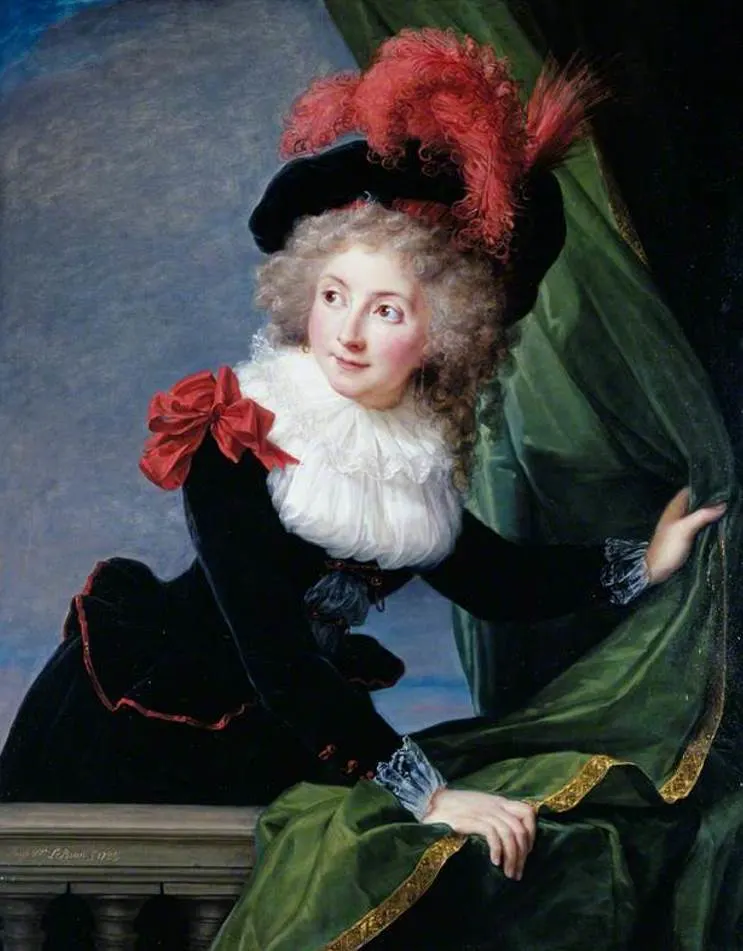
8. Portrait of Madame Du Barry
- Date created: 1781
- Dimensions: 69.2 x 51.4 centimeters (27.2 x 20.2 inches)
- Location: Philadelphia Museum of Art, Philadelphia, United States
The Portrait of Madame Du Barry is a painting that depicts Jeanne Bécu, Comtesse du Barry (1743-1793), one of the many mistresses of King Louis XV (1710-1774). She was the final woman who was given the title “Maîtresse-en-Titre” which meant the official mistress of the king.
Although her social life flourished during the Ancien Régime, she was one of the many victims of the French Revolution. Accused of treason, she was beheaded by guillotine. This painting was completed in better times and she admired this work but she instantly commissioned a second version.
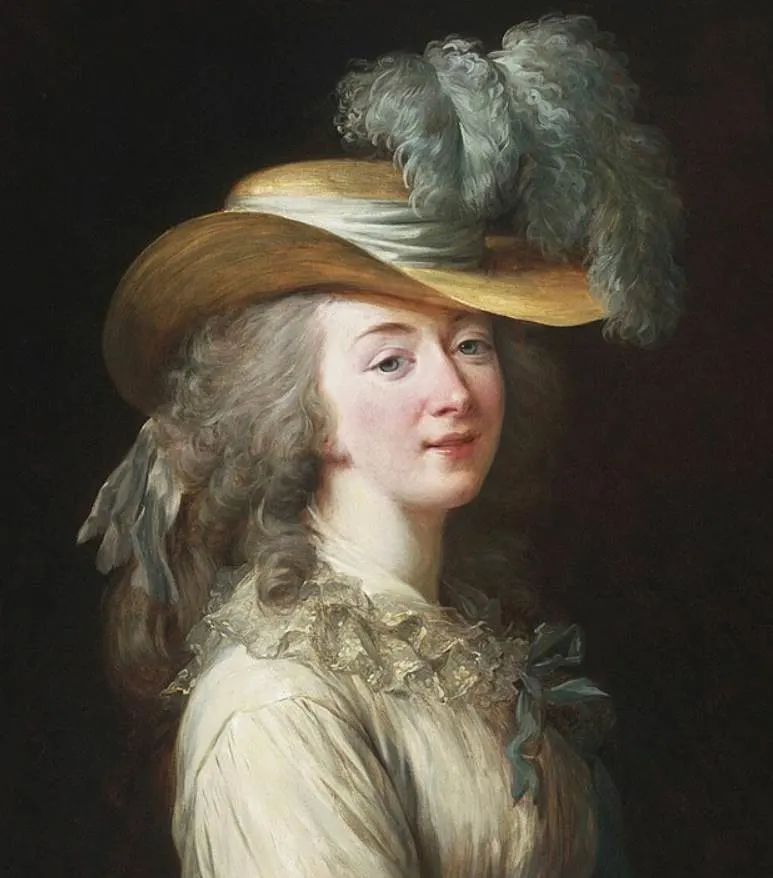
9. The Artist’s Brother
- Date created: 1773
- Dimensions: 61.6 x 50.5 centimeters (24.25 x 19.87 inches)
- Location: Saint Louis Art Museum, St. Louis United States
The Artist’s Brother is the title of a painting that depicts the brother of Éisabeth Vigée Le Brun, Étienne, while the boy was fifteen years of age. The youngster is depicted in a schoolboy dress while holding a book, a reference to his love for literature.
Étienne Vigée (1758-1820) never lost his passion for literature because he eventually became a successful writer. He wrote poetry that praised the French Revolution and several subsequent leaders, including Napoleon Bonaparte and Louis XVIII.
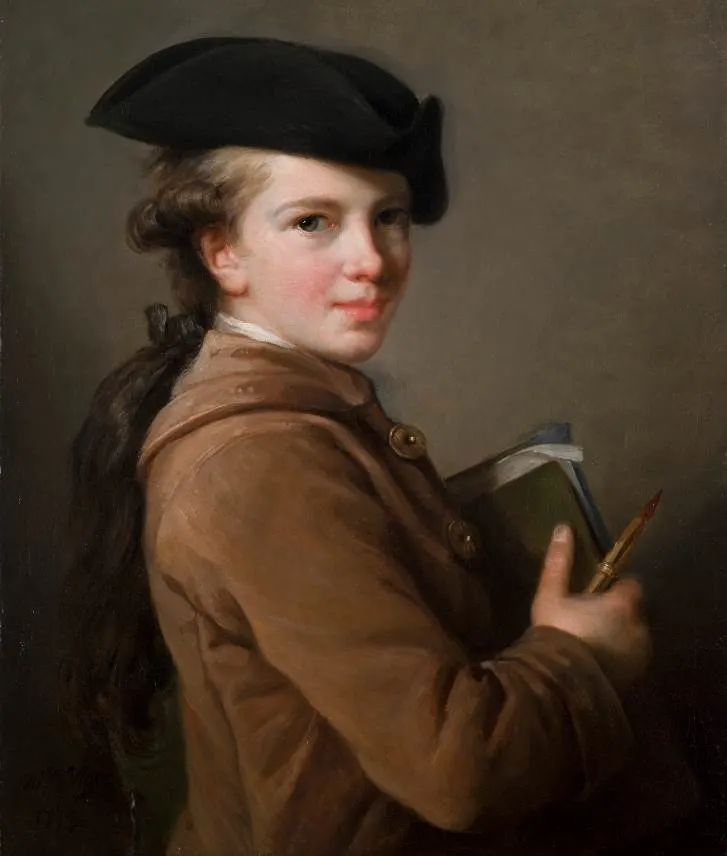
10. Self-portrait in a Straw Hat
- Date created: 1782
- Dimensions: 98 x 70 centimeters (38.5 x 27.5 inches)
- Location: National Gallery, London, United Kingdom
Self-portrait in a Straw Hat is arguably the most famous of all self-portraits that Élisabeth Vigée Le Brun produced during their long career. She produced two versions and the original is part of the private collection of Baronne Edmond de Rothschild.
The second version, which was most probably also completed in 1782, is part of the collection of the National Gallery in London. The painting depicts the artist with her brushes and a palette in hand as she confidently looks at the viewer. This is the epitome of a confident and accomplished artist, which she already was in the early 1780s.
